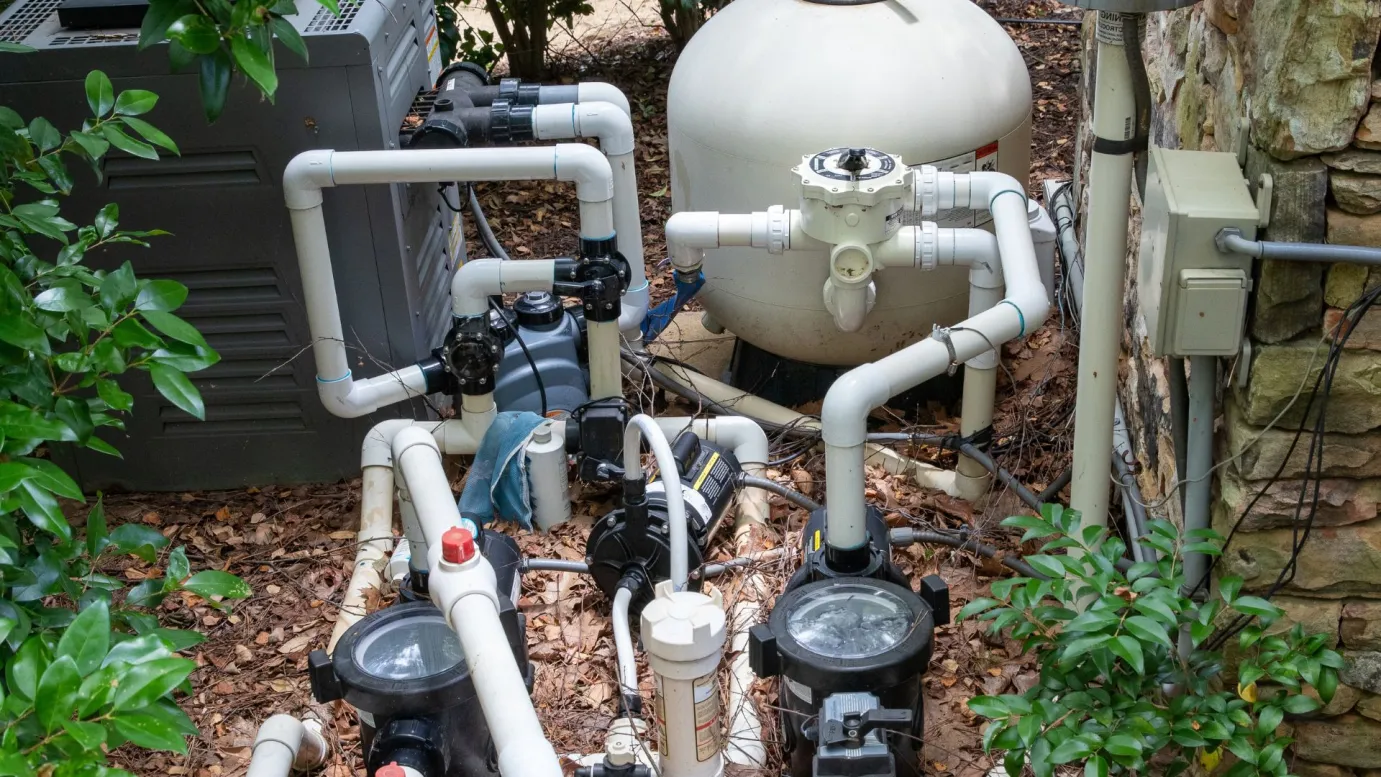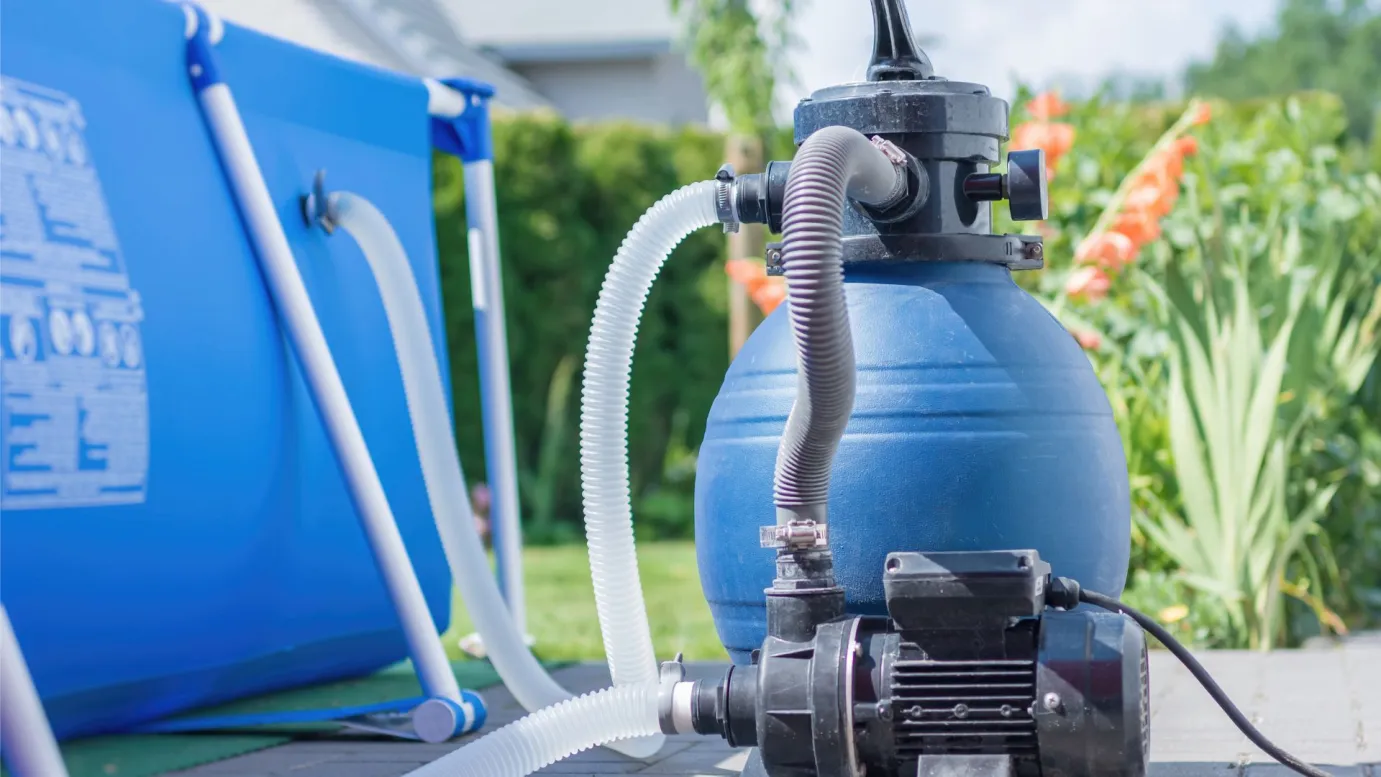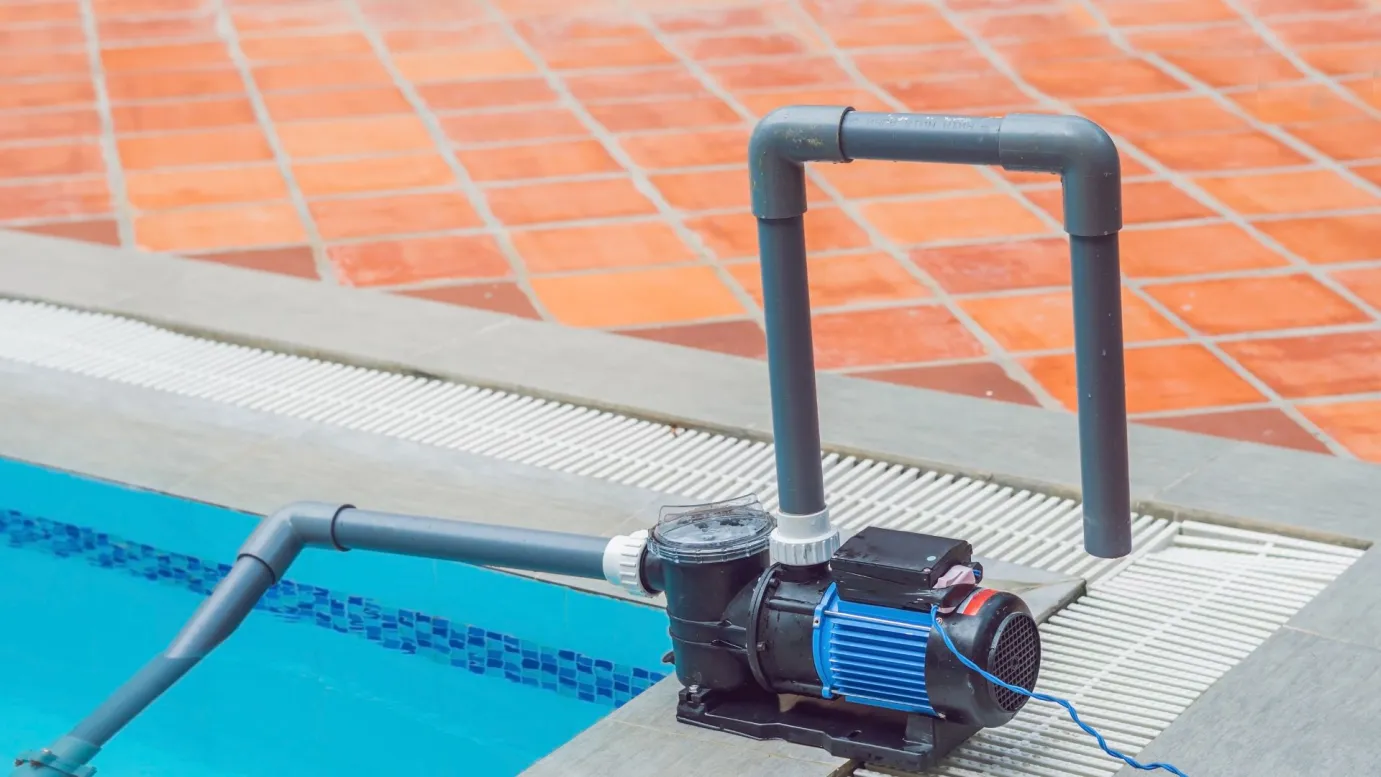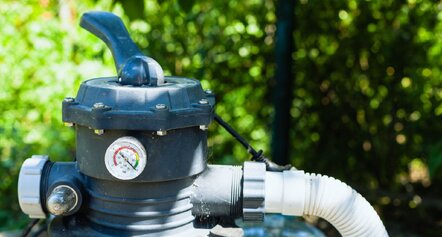Think your pool filter’s only job is to keep the water looking clean? Think again. A properly functioning pool filter does far more than just give you a sparkling pool. It plays a vital role in safety, equipment longevity, and keeping your backyard oasis stress-free.
Your pool filtration system helps prevent harmful bacteria from spreading, reduces wear and tear on expensive pool equipment, and ensures your pool stays swimmable all season long. Ignore it, and you might be dealing with cloudy water, costly repairs, or worse, a pool no one wants to swim in.
In this article, you’ll learn how to spot common pool filter issues, trace their root causes, and take practical steps to keep everything flowing smoothly. Ready? Let’s dive in.
How Your Pool Filtration System Works

Your pool filtration system is a team of hardworking parts working together to keep your pool water clean and healthy. Here’s how it breaks down:
- Pump: This is the heart of your pool filtration process. The pool pump pulls water from the pool and pushes it through the filter.
- Filter: There are three main types- sand filters, cartridge filters, and DE filters (diatomaceous earth). Each one traps dirt, oils, and other debris.
- Pool Skimmer: This is where it all begins. The skimmer pulls in floating leaves, bugs, and surface grime before it can sink.
- Pump Basket and Strainer Basket: These catch larger debris before it hits your filter.
- Filter System: Depending on your filter type, the filter media traps particles and sends clean water back out.
- Returns: These jets send clean, filtered water back into your pool.
Every component has a role. If your pool pump isn’t running properly, or your filter pressure is too high, you’ll feel it—maybe not immediately, but soon enough. The whole system relies on proper flow and optimal performance to work as one.
When just one part is off—say, a dirty filter, or a clogged pump strainer basket—you’ll start seeing signs. And those signs usually show up as murky water, rising pressure, or that unmistakable green tinge. That’s why it’s crucial to understand the warning signs early.
Telltale Signs of Pool Filtration Trouble

Wondering if your pool filtration system is struggling? Here are the most common red flags:
1. Cloudy or Murky Water
This is the classic symptom of a malfunctioning pool filter. Even if you’re maintaining proper water chemistry, poor filtration efficiency means tiny particles stay suspended. It’s like using a vacuum cleaner that’s lost suction—it’s running, but nothing’s happening.
2. Reduced Suction at Skimmer
Feel less pull at your pool skimmer? That’s a sign of poor water flow. It could be a clogged filter, debris in the pump basket, or even an air leak in the suction line.
3. High Filter Pressure
If your pool filter pressure gauge is reading higher than your clean start-up pressure or baseline pressure, your filter media is likely clogged. That added strain puts your pool equipment at risk.
4. Debris Floating Around
Still seeing leaves or dirt in your pool, even though the system’s running? This could mean a torn filter cartridge, an overloaded skimmer basket, or a faulty filter system.
5. Algae Growth Despite Balance
Keeping a proper chemical balance but still battling algae? That’s often a sign your pool filter isn’t doing its job. Algae can thrive even in balanced water if proper filtration is missing.
Just like ignoring the oil light on your car, these symptoms can lead to bigger headaches later. The good news? Most common pool filter problems are easy to catch—if you know what to look for.
Step-by-Step Diagnostic Checklist
Before calling in a qualified pool technician, use this checklist to do a quick DIY diagnostic. It’ll help you identify where your filtration system might be going wrong.
Step 1: Check Water Flow at Skimmer and Return
Watch the movement at the pool skimmer. Is water pulling in strongly or sluggishly? Then check your returns—do you feel good water flow, or a weak trickle?
Why it matters: Poor flow could indicate a dirty filter, blockage in pipes, or a tired pool pump.
What it suggests: Potential clog, broken valve, or leak in suction line.
Step 2: Inspect the Filter Pressure Gauge
Take a look at your pool filter pressure gauge. Compare it to your known clean start-up pressure.
Why it matters: Too much pressure = blockage. Low filter pressure = suction issue.
What it suggests: Time to backwash the filter, check for clogs, or inspect the filter lid for cracks.
Step 3: Examine the Pump Basket and Impeller
Turn off the system and open the pump basket. Clear out leaves, twigs, or anything that doesn’t belong.
Why it matters: A clogged pump strainer basket or jammed impeller reduces suction.
What it suggests: Restriction upstream affecting filtration.
Step 4: Backwash or Clean Filter Cartridge
Backwash the filter if you’ve got a sand filter or DE filter. For cartridge filters, rinse with a hose or use filter cleaner.
Why it matters: Dirty media chokes your system.
What it suggests: The filter tank is full of grime and needs attention.
Step 5: Look for Leaks or Air in the System
Bubbles in return jets? Air escaping from the filter’s air relief valve?
Why it matters: An air leak in the suction line affects the prime and flow.
What it suggests: Loose fittings, cracked pipes, or worn seals.
Step 6: Test Water Chemistry
Even a perfect filter can’t compensate for poor water chemistry. Test pH, chlorine, alkalinity, and more.
Why it matters: Proper maintenance includes maintaining proper water chemistry to avoid algae and scaling.
What it suggests: Imbalance might be overworking your system.
Follow these steps, and you’ll know exactly where to focus, saving yourself both time and money.
Common Causes and Fixes for Filtration Failures

Now that you’ve done your checks, here’s what’s usually behind the most common pool filter problems, and how to handle them.
Clogged Filter Media or Dirty Cartridge
- Symptom: High filter pressure, cloudy water
- Fix: Backwash the filter (for sand or DE), or clean/replace the filter cartridge using filter cleaner
- Tip: Most pool filters need cleaning every 4–6 weeks, depending on use.
Air Leaks in Suction Line
- Symptom: Bubbling at returns, low pressure, noisy pump
- Fix: Tighten fittings, replace worn O-rings, check unions near the pool pump and skimmer basket
Worn Pump Impeller
- Symptom: Weak flow, pump humming
- Fix: Open the pump housing and inspect the impeller. Replace if it’s worn or jammed.
- When to call a pro: If you’re not confident pulling apart the pump.
Overloaded Skimmer Basket
- Symptom: Low suction at skimmer, rising pressure
- Fix: Empty skimmer basket regularly—daily in leaf season!
- Reminder: Clogged skimmers reduce proper flow and stress the pump.
Broken Multiport Valve
- Symptom: Water bypassing filter, odd noises
- Fix: Replace or rebuild the valve. The spider gasket inside is often the culprit.
- DIY Level: Medium. If unsure, a qualified pool technician can handle it fast.
Old or Undersized Equipment
- Symptom: Ongoing filtration issues, poor filtration efficiency
- Fix: Upgrade to modern, correctly sized pool components.
- Bonus: New systems offer pool automation, better energy efficiency, and longer life.
When in doubt, don’t guess. Filtration is too important. Get help before small issues become costly replacements.
Preventive Maintenance Tips
The best cure? Prevention. A solid pool maintenance routine can extend the life of your pool equipment and save you from future drama.
Stick to a Cleaning Schedule
Clean cartridge filters monthly. For a sand filter, backwash the filter every 4–6 weeks or when the pressure gauge hits 8–10 PSI over baseline.
Know Your Filter Type
Cartridge filters = clean with hose
Sand filters = regular backwashing
DE filters = backwash and recharge with diatomaceous earth
Pump Run Times
Run your pool pump 8–12 hours daily in summer. Less in cooler months. Best to run it during off-peak hours to save on energy costs and improve filtration efficiency.
Inspect Seals and Fittings
Check the filter lid, pump basket O-rings, and union connections monthly. A minor leak now can become a major repair later.
Empty the Skimmer Basket
Leaves build up quickly, especially in windy or rainy seasons. A full skimmer basket leads to low pressure and blocked flow.
Keeping up with regular maintenance doesn’t just protect your filter system—it protects your weekends from being hijacked by unexpected repairs. Think of it as a little work now to avoid a big bill later.
When It’s Time to Upgrade Your System
Sometimes, it’s not about fixing, it’s about replacing. If your filter tank is cracked, your pool pump wheezes more than it hums, or your pressure reading never stabilises, you may be due for an upgrade.
Newer pool filtration systems are built with smarter designs, improved filtration process performance, and energy-efficient motors. Some even offer pool automation features that handle scheduling and alerts.
Most pool filters have a lifespan of 5–10 years, depending on proper maintenance and usage. If you’re constantly dealing with pool filter issues, it might be time to invest in peace of mind.
Your Pool’s Not Just for Looks – It’s a Living System
Your swimming pool isn’t just something to look at—it’s a living, breathing system. A clean, sparkling pool means more than just aesthetics. It means safety for pool users, longer life for your pool equipment, and less stress for you.
Proper filtration, optimal performance, and proper chemical balance all come together to give you that crystal clear water you’re proud to show off. And let’s face it—what’s better than the kids jumping into a spotless pool on a hot day?
Keep your pool healthy, and it’ll reward you with memories for years.
Let the Experts Handle the Hard Part
Trouble with your pool filter? Leave the headaches to us.
At Flamingo Pools, we specialise in diagnosing and repairing pool filter problems. From fixing a malfunctioning pool filter to upgrading your entire filtration system, our team of qualified pool technicians has seen it all—and sorted it all.
We’ll inspect your filter pressure, check for air leaks, deep-clean your filter cartridge, and ensure optimal condition of your pool components. We even offer scheduled pool service and pool maintenance plans to keep things running smoothly year-round. Don’t guess—get it right the first time. Give us a call today or book a visit—your pool deserves it.




